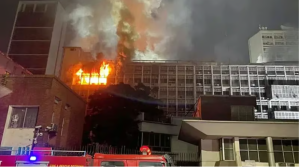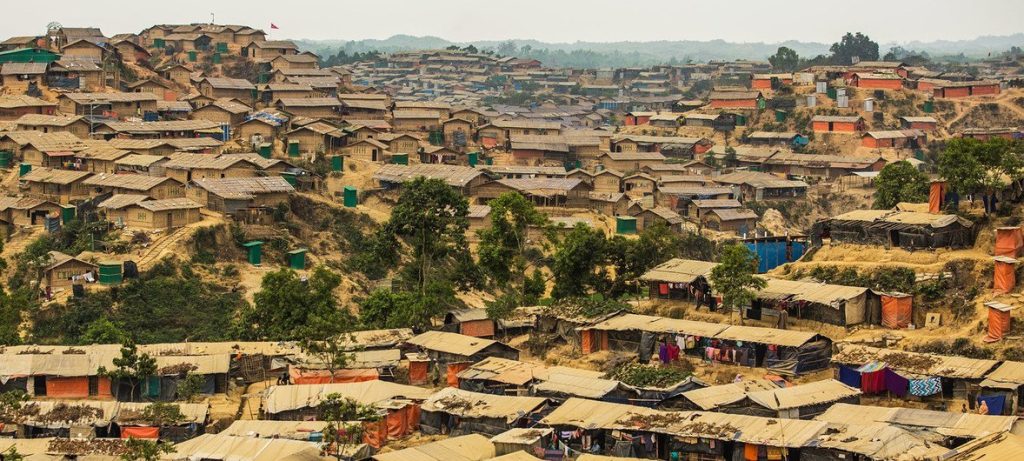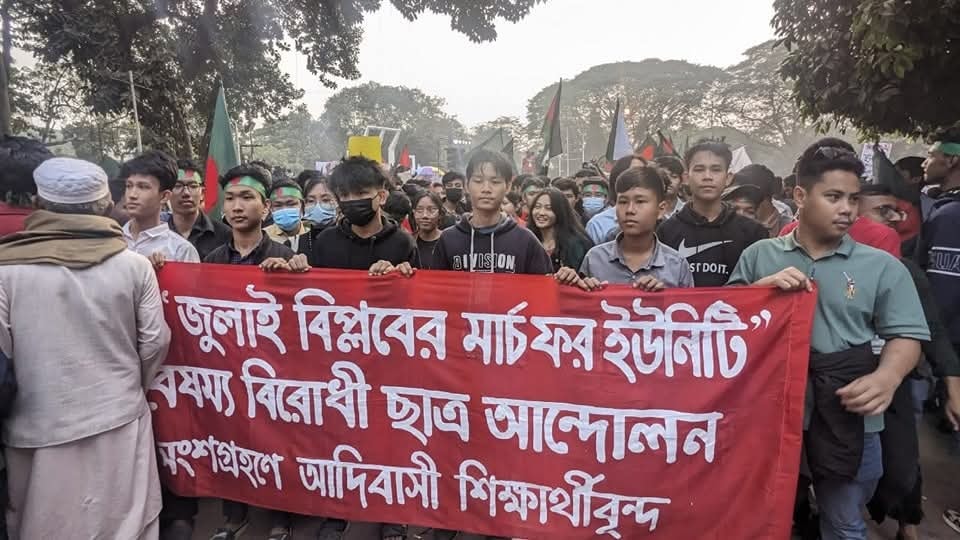Suddenly thick white smoke enveloped Building No. 1 of the Secretariat, home to the Ministry of Public Administration and the Cabinet Division, early morning on March 14 last year.
Television screens showed firefighting personnel conducting rescue operations with drones hovering above. People were jumping off the building to save their lives. Injured individuals were being rushed to hospitals in ambulances. Firefighters were rescuing staff trapped on the rooftop using ropes. A child was saved, and emergency rescue methods were deployed to rescue individuals using ropes. Others escaped by jumping onto jumbo cushions.

This dramatic scene wasn’t a real disaster but a fire drill. The drill aimed to teach how to save lives and assets during a fire in this critical administrative hub. Ministers, secretaries, and other officials observed the exercise.
However, the devastating fire that broke out at Building No. 7 of the Secretariat on a Wednesday night was no drill. It was a real and unprecedented fire in the Secretariat’s history. It took 19 firefighting units nearly 10 hours to bring the blaze under control, during which firefighter Nayan tragically lost his life.
Building No. 7 houses key ministries such as Road Transport, Local Government, Youth and Sports, and Telecommunications. The fire primarily affected the 6th, 7th, and 8th floors, causing significant damage, particularly to the Road Transport Ministry and Local Government Ministry.
Why Did It Take 10 Hours to Extinguish the Fire?
The question remains: why did it take so long to control the fire? This isn’t the first time questions have arisen about the firefighting capabilities of the fire service after a major incident. Despite the commendable bravery and humanity displayed by firefighters, the lack of modern equipment and resources remains a recurring issue. Fire service personnel, often the first responders to disasters like fires, earthquakes, or road accidents, face significant risks due to inadequate equipment.
According to the fire service, the fire took longer to extinguish due to the Secretariat’s confined and restricted area. Many rooms were locked, and windows had to be broken to prevent the fire from spreading and minimize damage.
How Modern is the Secretariat?
In February 2020, a fire drill at Building No. 4 revealed challenges in managing fire incidents at the Secretariat. Assistant Director Saleh Uddin of the Dhaka Fire Service noted that the Secretariat’s small entry gates made it difficult for fire trucks to enter. During peak hours, with 1,200 cars parked in a space designed for 400, emergency response becomes almost impossible.
Despite recommendations to expand entry gates, no substantial action was taken. Wooden interior decor, despite prior warnings, contributed to the fire’s spread, raising concerns about adherence to safety protocols.
Accident or Sabotage?
The fire’s cause—whether accidental or intentional—remains uncertain. Given the timing and location, ruling it out as a mere accident seems premature. Speculation includes deliberate attempts to destroy evidence linked to corruption investigations in various government projects.
Additionally, the fire occurred amid tension over administrative reforms. Some suspect sabotage by factions opposing the reforms to maintain their dominance and hinder government initiatives.
Who Set the Fire?

Briefing Home Advisor Jahangir Alam Chawdhury
The Secretariat is a highly secured area, accessible only with proper passes. If an outsider set the fire, how did they breach security? Alternatively, could someone inside the Secretariat be responsible? If it was an accident, was it due to an electrical short circuit?
Investigations and Their Effectiveness
A seven-member committee has been formed to investigate the incident and submit a report within seven days. However, the efficacy and impartiality of such investigations often come under scrutiny. Past cases like the 2010 Nimtoli fire and the 2019 Chawkbazar fire show that recommendations from investigations are rarely implemented.
If the recommendations made after the Nimtoli fire had been enforced, the Chawkbazar tragedy, which claimed over 80 lives, could have been prevented. Similarly, unless corrective actions are taken promptly, history will continue to repeat itself.

